During our fall trip to the Eastern Sierras, we took a day to visit the Ancient Bristlecone Pine Forest located in the nearby White Mountains along the California-Nevada border. While not part of the Sierra Nevada Mountains, I’m including this post with our Sierra posts due to their close proximity to one another. The Great Basin Bristlecone pines found there are the oldest non-clonal species on the planet! Many of the trees there are over 4,700 years old. I’d highly recommend a side trip to the bristlecones for anyone visiting the Sierras near Bishop or Lone Pine.
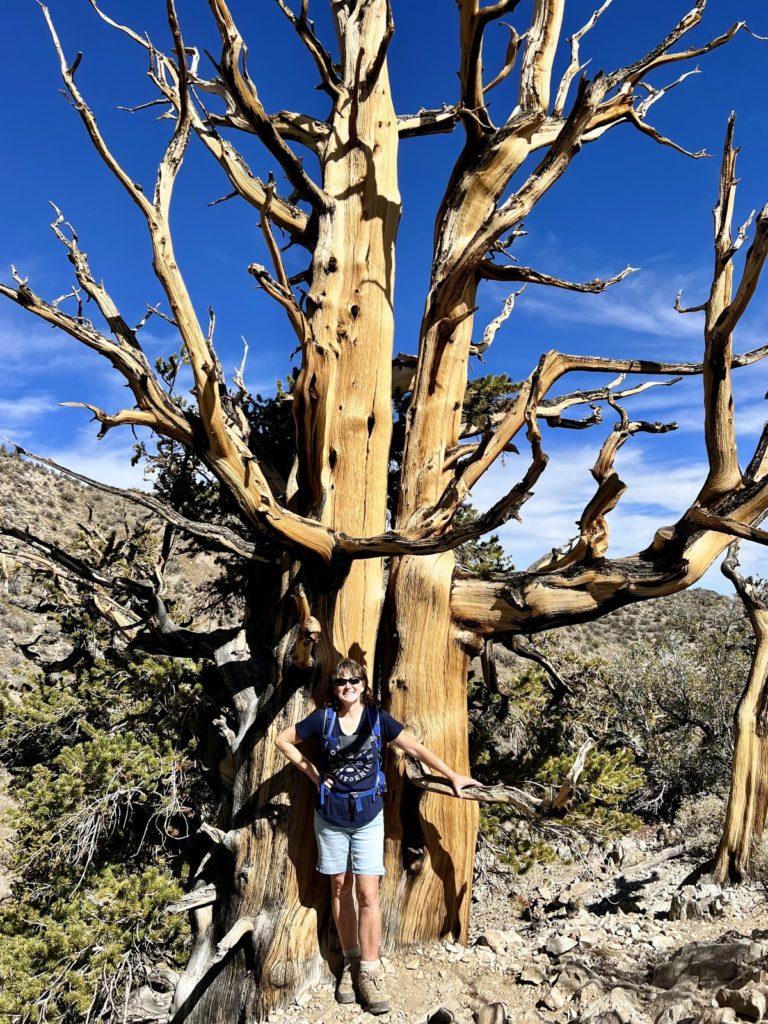
Great Basin Bristlecones
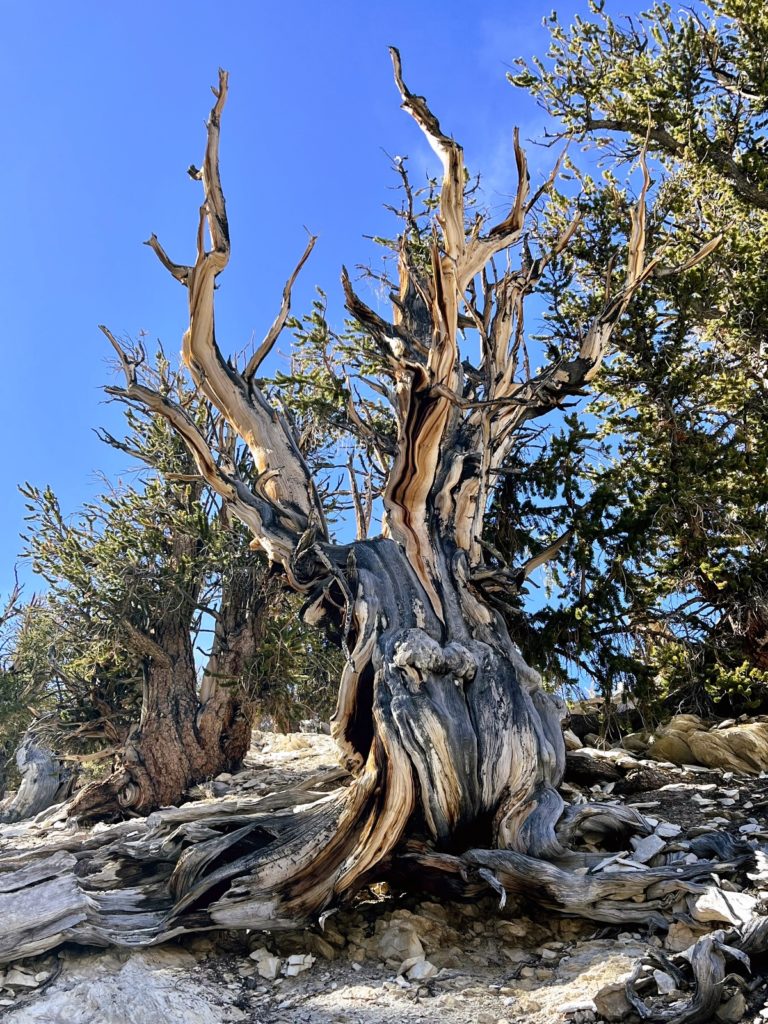
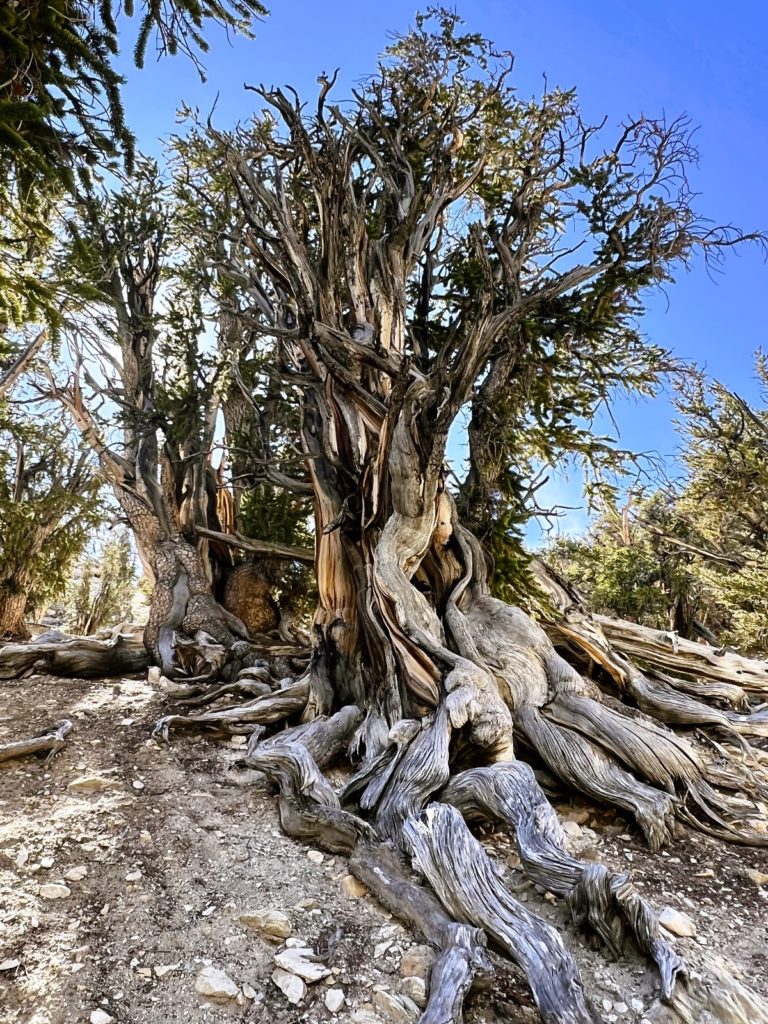
The following information was taken from this page on the Great Basin National Park website:
Great Basin Bristlecone pines (Pinus longaeva) are remarkable for being the oldest non-clonal species on the planet. This strange tree, shaped by the wind, snow, and rain has survived over thousands of years, overseeing the rise and fall of great empires, growing through ice-ages and catastrophic volcanic eruptions. But their ability to survive these harsh environments and adverse growing conditions is exactly their secret to great longevity.
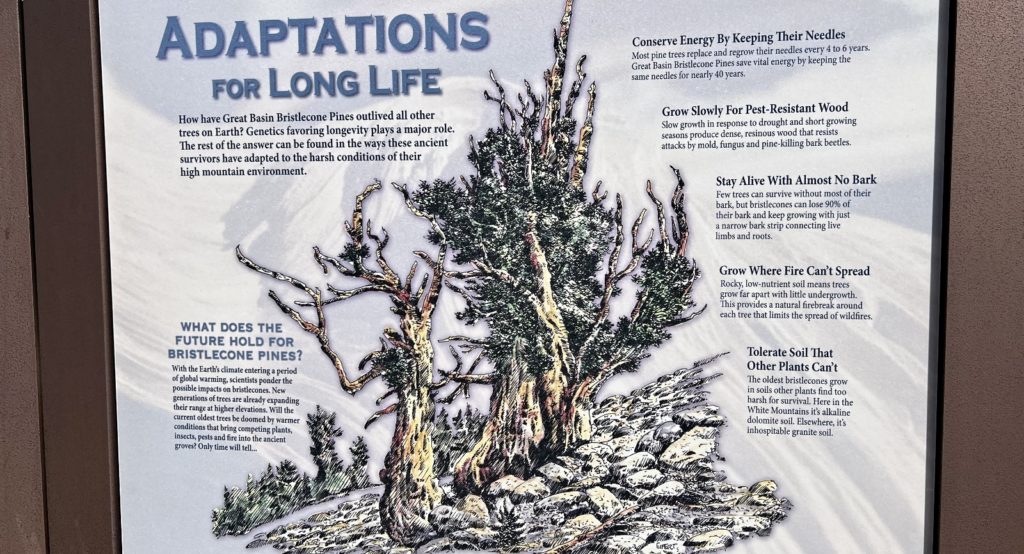
The conditions in which they live are harsh (with temperatures that drop well below freezing), a short growing season, and high winds that twist the trees into almost human-like forms. Because of these conditions the Pinus longaeva grow very slowly, and in some years do not even add a ring of growth. This slow growth makes the wood very dense which provides resistance from insects, fungi, rot, and erosion. And at high elevation the Great Basin Bristlecone pines spiral out from seemingly impossible soil; this too proves favorable for the ancients. They grow where most other vegetation cannot.
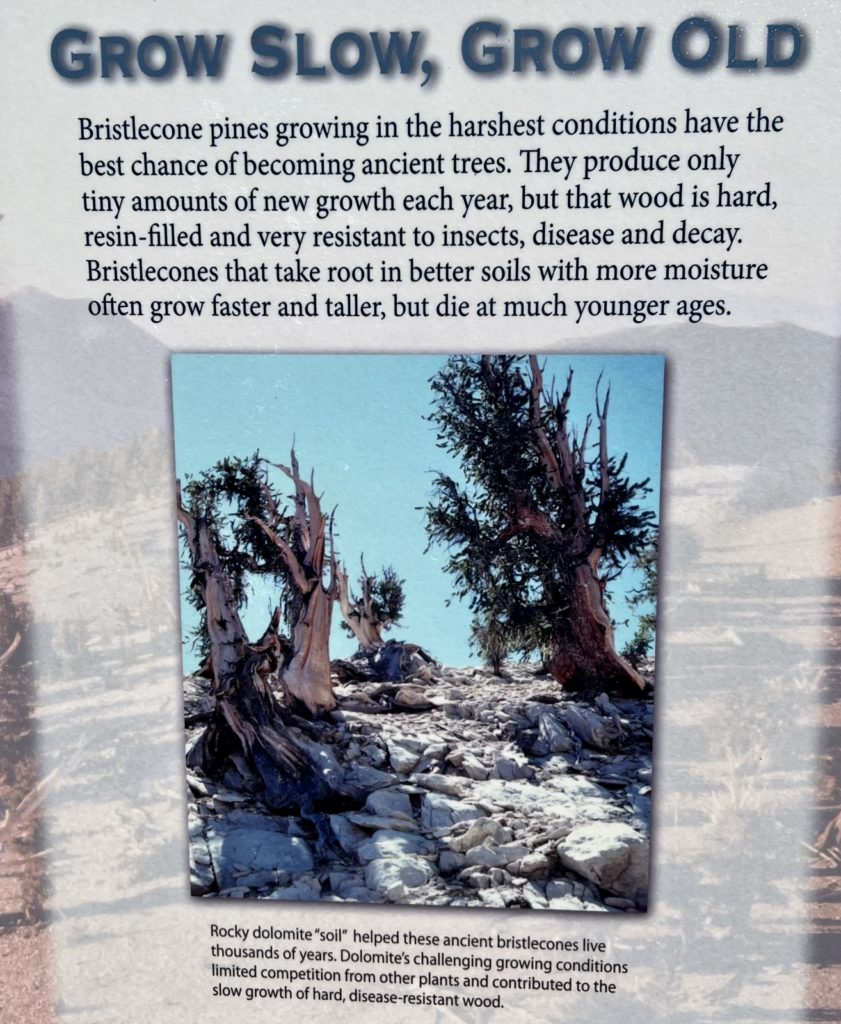
The Great Basin Bristlecone pines are an extremely rare species found only in California, Nevada and Utah. The dispersion of this species is perhaps thanks to the wind, or the Clark’s nutcracker, or maybe some other bird that is now extinct, as they may have traveled with the seeds to other remote areas of high elevation.

Visiting the Ancient Bristlecone Pine Forest
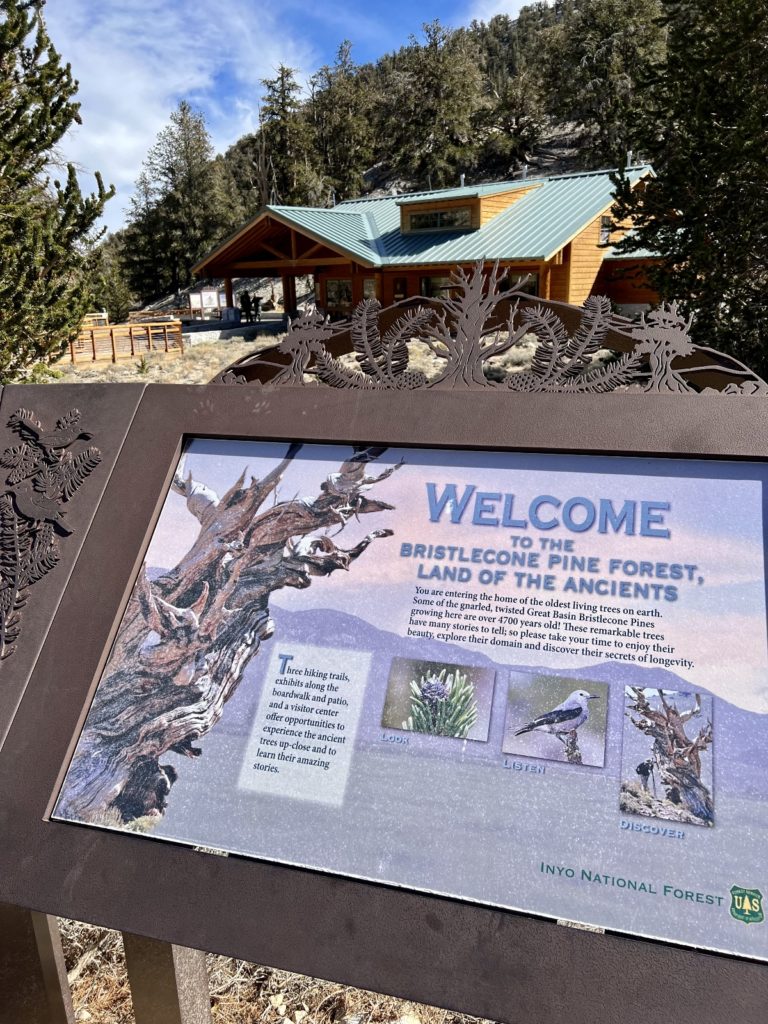
We have been fortunate enough to see bristlecones at Great Basin National Park, Cedar Breaks National Monument, and Bryce Canyon National Park. For us, it is still a pretty rare thing to see these beautiful old giants and we jump at any opportunity to visit them. It was a bit of a drive for us from our camp at Horton Creek to the Ancient Bristlecone Pine Forest Visitor Center, but it was well worth it.
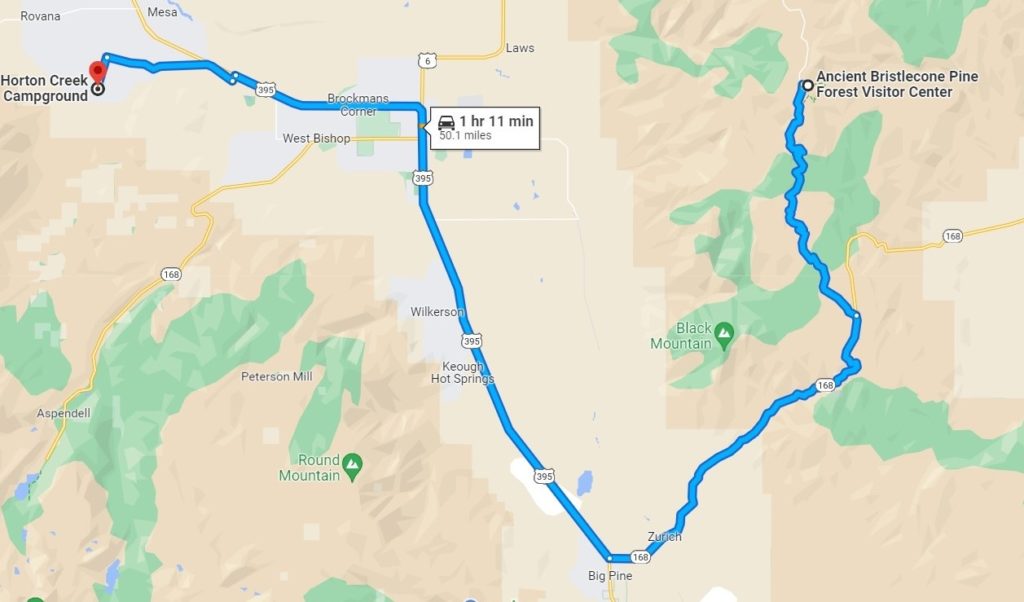
Most visitors to Ancient Bristlecone Pine Forest visit the Schulman Grove. The visitor center is located there as well as several self guided hiking trails. Methuselah, believed to be the oldest of all the bristlecones at 4,789 years of age (as determined by core samples taken in 1957), is located in this area; however, its precise location is undisclosed by the U.S. Forest Service in order to protected it from vandalism. Further up the road, the Patriarch Grove is home to the world’s largest bristlecone pine, the Patriarch Tree. It is possible to visit both groves on the same day, but we only visited Schulman.
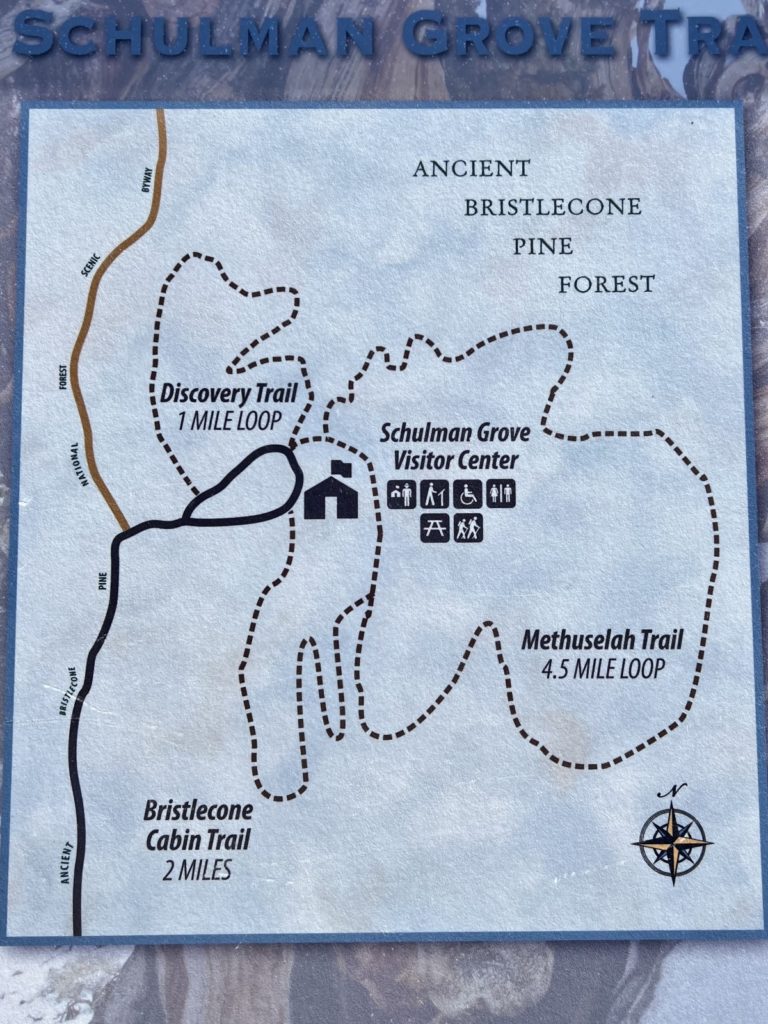
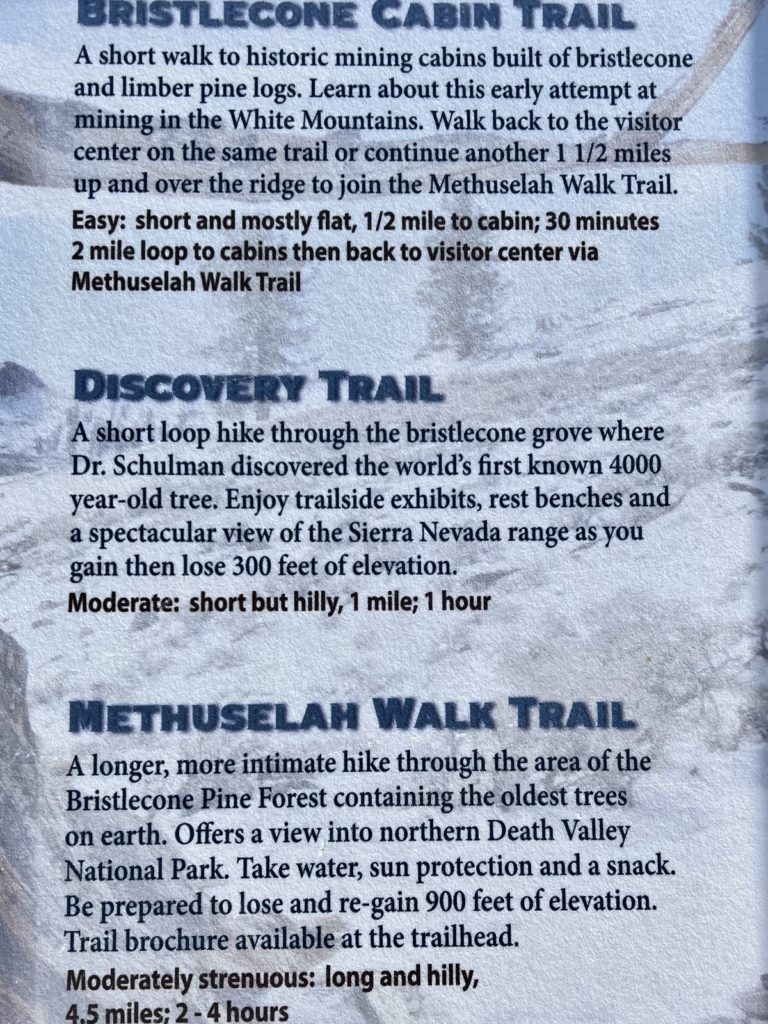
During our visit to the Schulman Grove, we hiked the 4.5 mile long Methuselah Trail. This loop trail is rated as moderately strenuous with 900 feet elevation gain. At over 10,000 feet elevation, the air is a bit thin there so plan on taking your time and enjoying the sights along the way. In addition to seeing a massive population of bristlecone pine, we were treated to views into the northern part of Death Valley National Park.

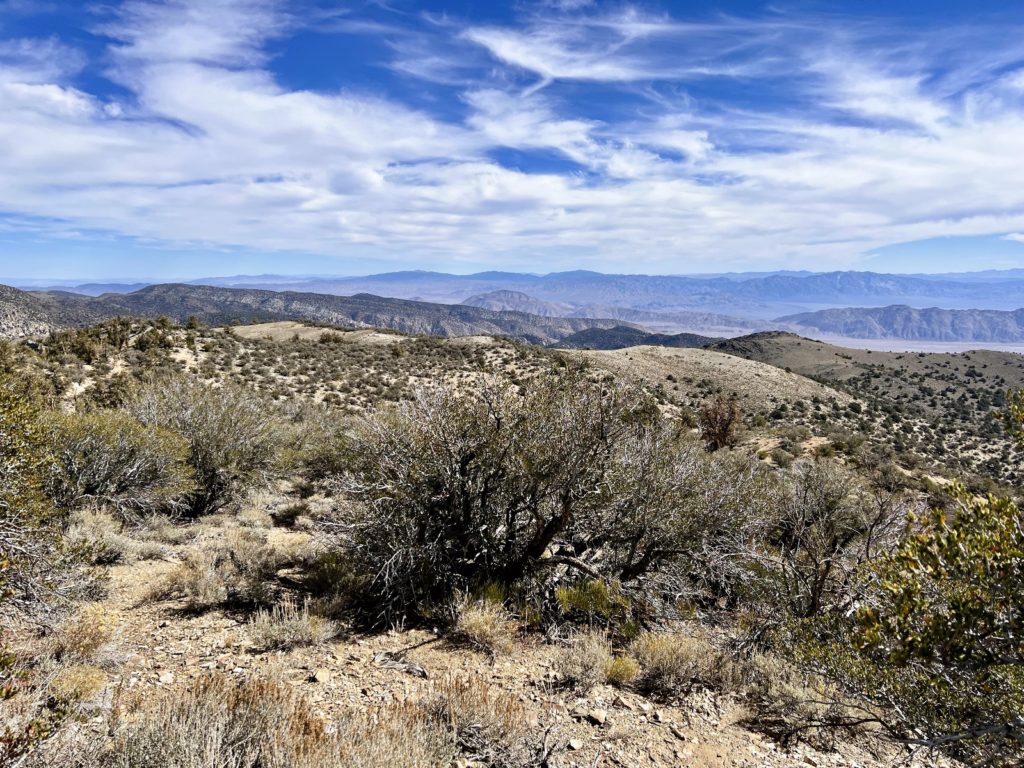
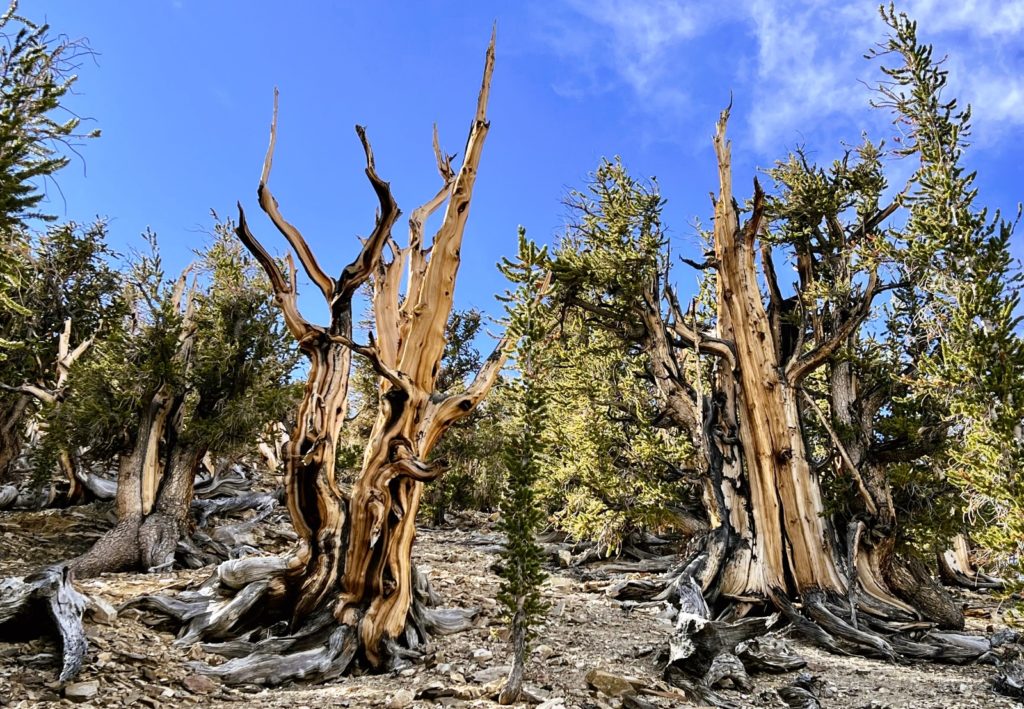
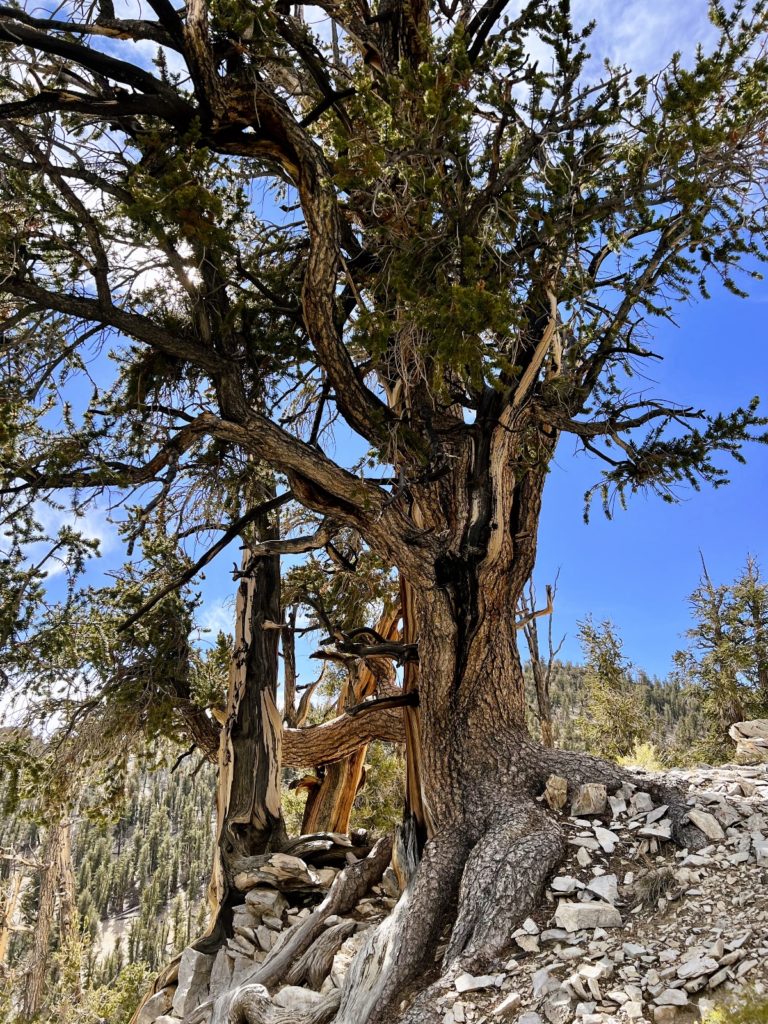
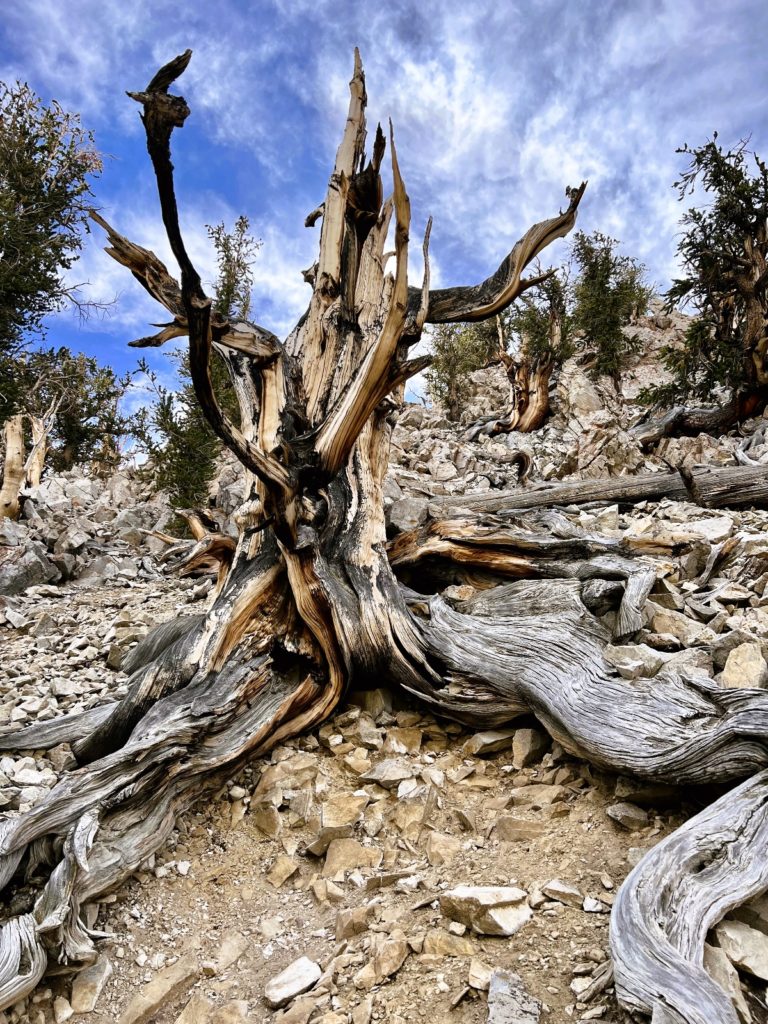
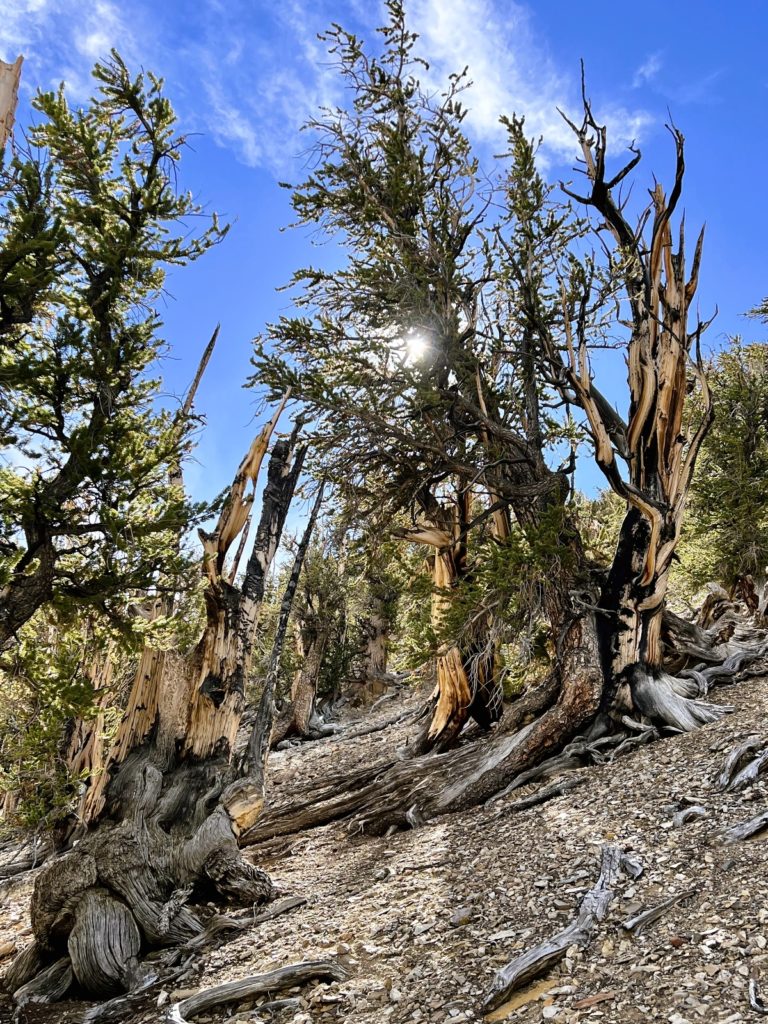
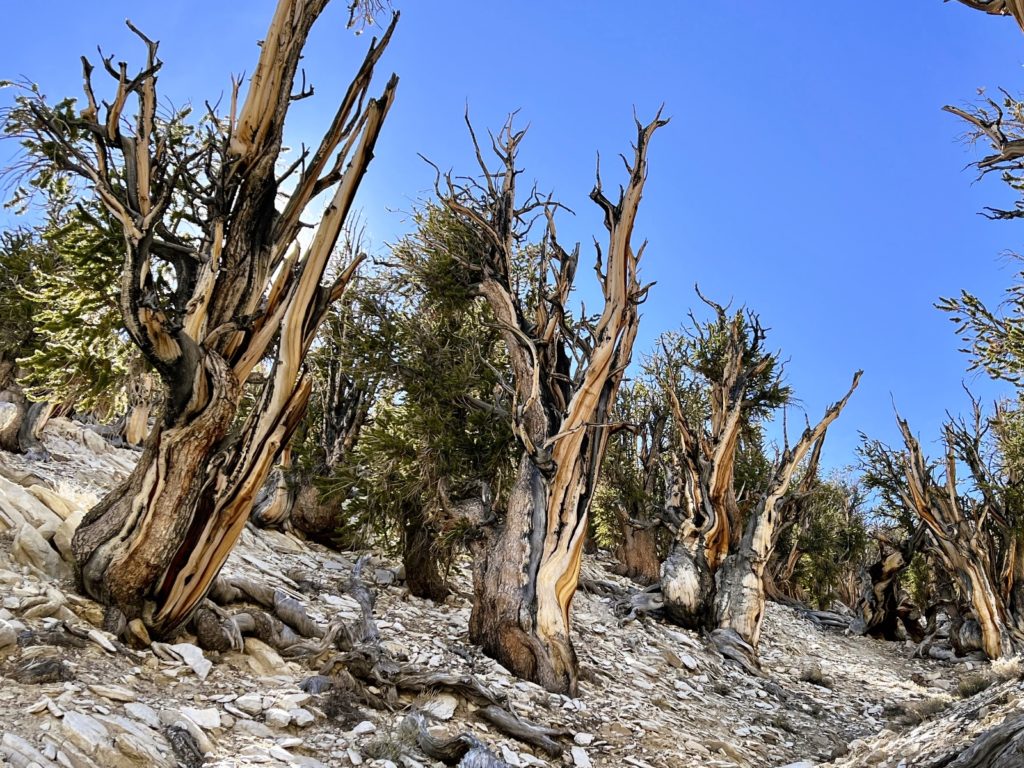

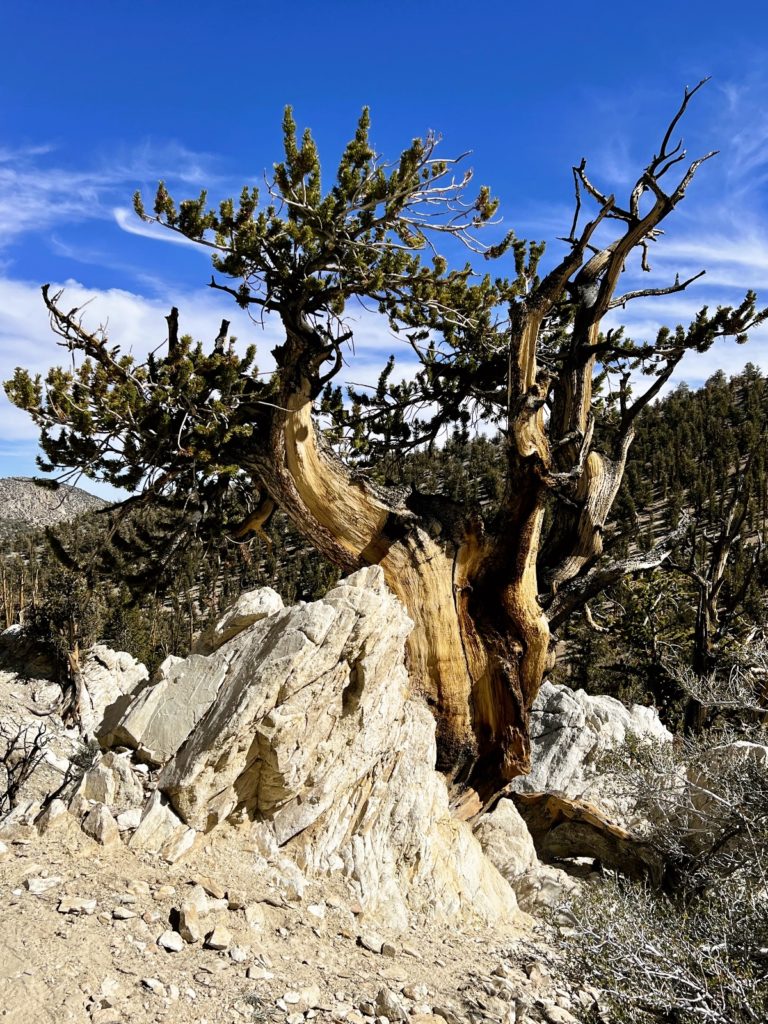
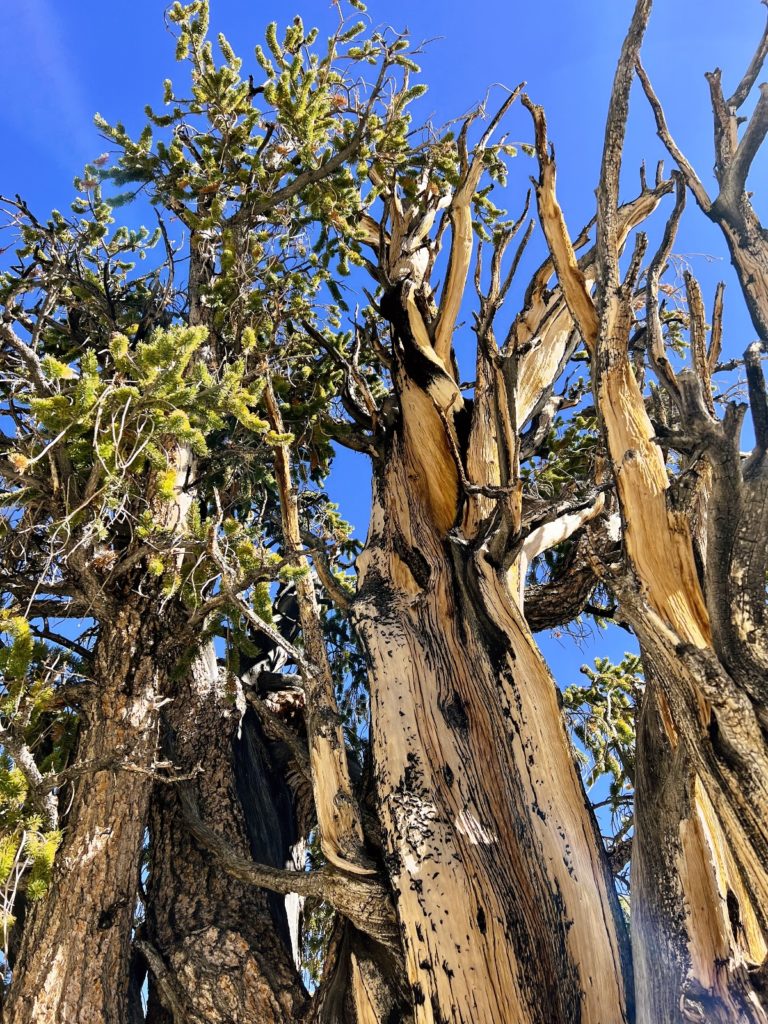
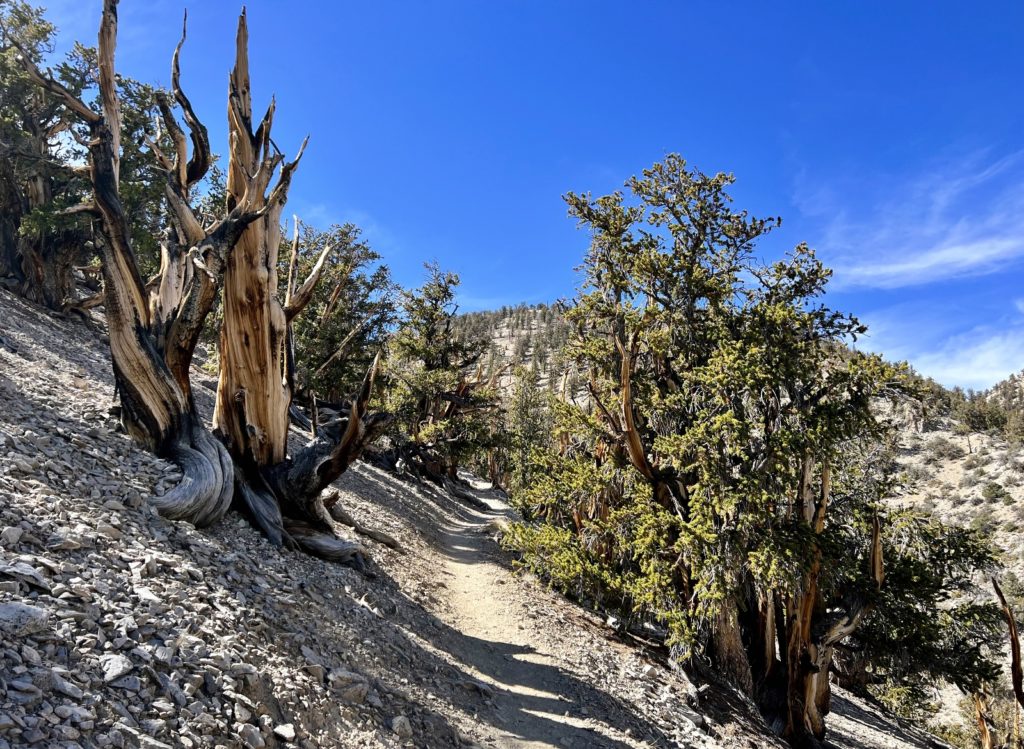
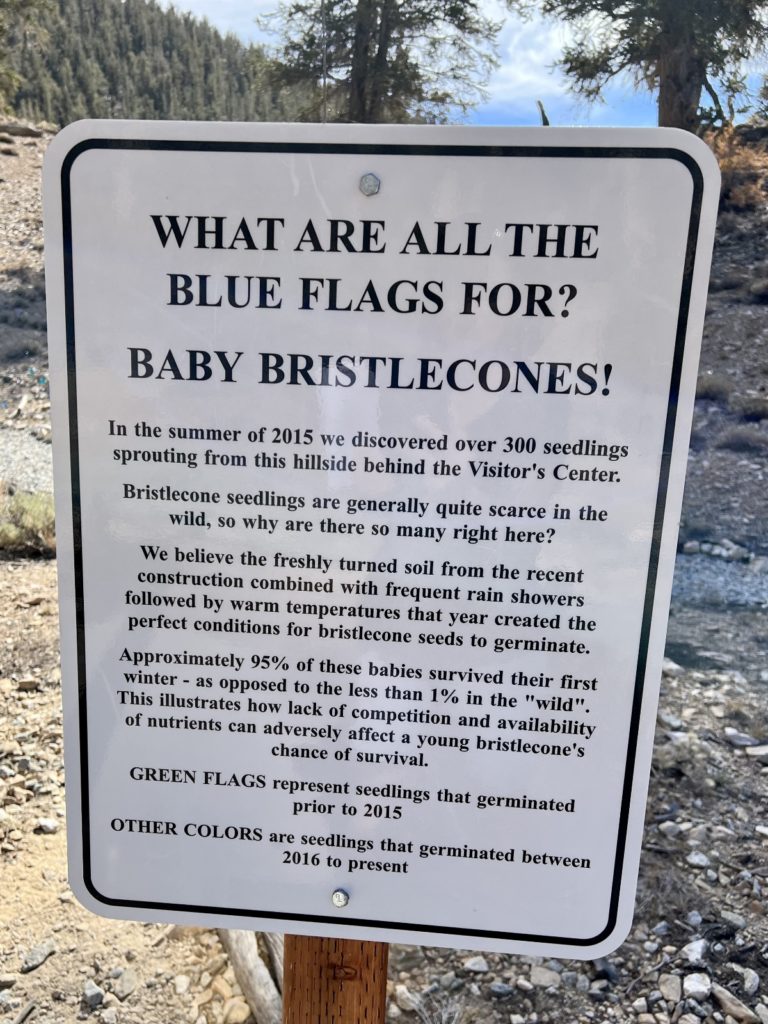

Our impression of the Schulman Grove at Ancient Bristlecone Pine Forest was that the trees we saw were not as massive and beautifully tortured as those that we saw at Great Basin National Park and Cedar Breaks National Monument; however, it seemed like there were far more numbers of trees. Comparisons aside, the trees along the Methuselah Trail were beautiful and it was a special experience getting to see them.
The Adventure Continues
Join us for our next post as we wrap up our time in the Sierras with a visit to a National Historic Site. And don’t forget to check out our Amazon RV and Adventure Gear recommendations. We only post products that we use and that meet the Evans Outdoor Adventures seal of approval. By accessing Amazon through our links and making any purchase (even things as simple as toothpaste!), you get Amazon’s every day low pricing and they share a little with us. This helps us maintain this website and is much appreciated!
Baby Bristlecones!!!!
What a great post. I thoroughly enjoyed the photos and info I’ve been to GB Nat’l Park and both times the road was closed up to the Bristlecones. Once due to snow and the other time due to construction. Darn! Hopefully will try again. We still love are tent but back to thinking about a small trailer suitable for boondocking. I can’t really visit the southwest in a tent. That’s another story. Cheers!
So glad you enjoyed the post, Toni. It really is something special to see these trees and know they’ve been on this earth thousands of years! I’d say Great Basin NP was our favorite place to see them. The trees there seem more weathered, massive, and beautiful. But this area of California was pretty awesome too.
Happy trails,
Lusha